While Tuscany or Umbria may be the first regions that spring to mind when thinking of a vacation in Italy, travelers would be wise not to overlook Lazio. The region is home to the national capital, Rome, and all it has to offer; however, it boasts way more than just the country’s largest city. It is also where you’ll find ancient Etruscan culture in Tarquinia and Cerveteri.
And we haven’t even touched on nature in Lazio. Beaches, rolling green hills, and mountains are dotted across the region – with volcanic springs to rest those aching muscles after a hike, or lakes where you can take a dip in the middle of the day.

In this post, we’ll take a look at the best things to do in Lazio. Hopefully, it will help you to plan and make the most of your Italian vacation. Many of the activities on this list are an easy weekend break or day trip from Rome, which is perfect if you want to escape the hustle and bustle of Italy’s capital city.
Table of contents: ()
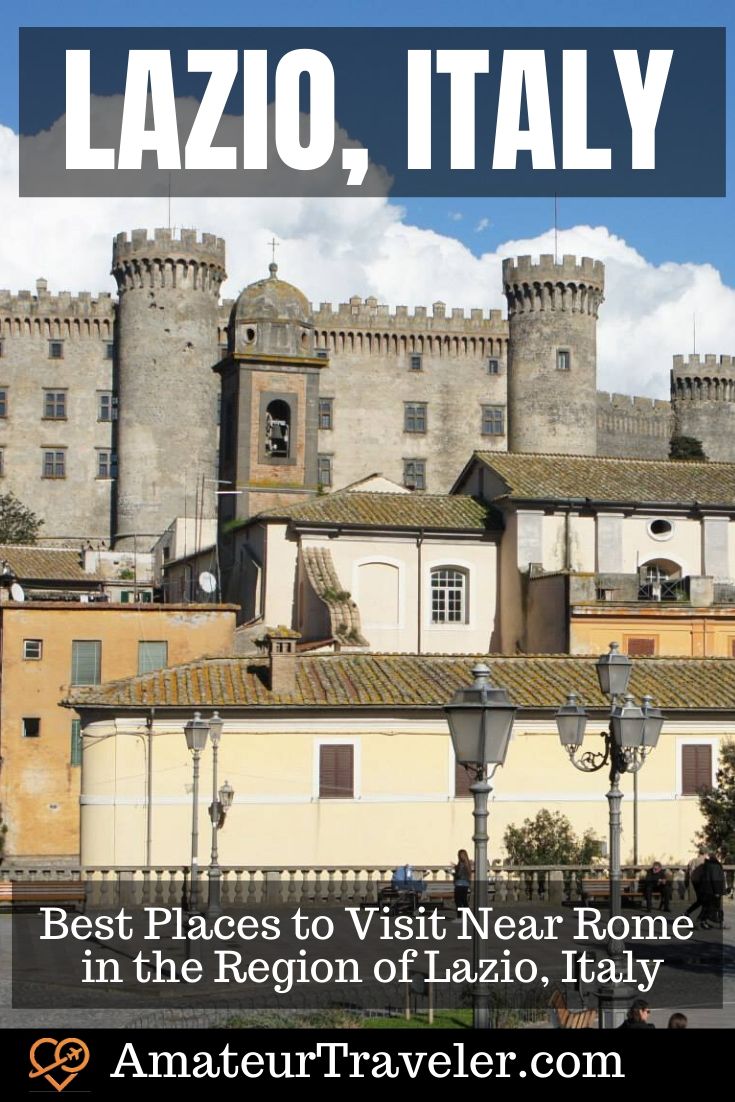
- Visit Italy’s timeless classical city, Rome
- Bathe in a volcanic hot spring
- Stand up paddleboard on the beautiful Lake Bolsena
- Stroll around a garden packed with monsters
- Explore one of the best-preserved Renaissance gardens in Europe
- Marvel at the clifftop settlement of Civita di Bagnoregio
- Head to one of the region’s blue flag beaches
- Visit the Ancient Ruins of Rome’s Ancient Sea Port
- Learn about history at the castle of Bracciano
- Sample ‘i piatti tipici’
- Search for bears and wolves in the Parco Nazionale d’Abruzzo, Lazio, e Molise
- Step back in time to learn about the Etruscan civilization
- Explore the villas of Tivoli
- Lazio Podcast
Visit Italy’s timeless classical city, Rome
There’s more to Lazio than Rome, but it’s a great place to start your trip (and use as a base if need be). It ticks pretty much every box when it comes to what to do in a long weekend – however you could spend even longer than that in the Eternal City without getting bored.
Its rich history can be seen all over the city. Remains from when it was the heart of the Ancient Roman empire can be seen – with the Forum, Colosseum, and Circus Maximus all still popular visitor attractions today. Incredibly, the ancient Pantheon Temple still holds the largest unreinforced concrete dome in the world – sure to take your breath away when you visit.
However, it’s not just the ancient architecture that will leave you stunned. There’s the Trevi Fountain which is adorned with lavish Baroque sculptures, the wide-open Piazza Navona, and there’s also the fact that the smallest country in the world resides within Rome – Vatican City.
While all of these attractions may make Rome sound like some sort of theme park, that’s not the case. Head to Trastevere for an awesome food and nightlife scene without breaking the bank, or spend an evening with your drink of choice in the bars of Campo dei Fiori.
It’s very rare that a tourist leaves Rome feeling disappointed.
Bathe in a volcanic hot spring
Viterbo is one of the largest cities in the region, and this off the beaten track gem is a must for any Lazio itinerary. While the city has built up over the years, its walled center has remained mostly unchanged – with original architecture on churches and city center buildings dating back to the 11th century. It’s one of the best-preserved medieval cities in Italy. The town sits in the shadow of the Palazzo dei Papi, as the city was the Papal seat for 24 years in the 13th century.
Nowadays, the city is probably best known for its volcanic hot springs. They were mentioned in Dante’s Divine Comedy and have long been reputed to have healing powers. Waters can be anything from 40 – 58 degrees and you’ll often find the locals chilling out here after a day at work or between classes at university. For tourists with a little more cash, there are exclusive spa resorts but to get to know the city and its locals, it’s best to head to the free spas at Bullicame and Il Bagnaccio.
Another plus from visiting Viterbo’s hot springs is that the crowds are nothing like those at Saturnina, so you’ll be able to find your own spot to just sit back and soak up those therapeutic waters.
Viterbo is an easy day trip from Rome – a slow train that will allow you to appreciate the picturesque landscapes takes around two hours. There are lots of places to sleep, eat, and drink in the city. It’s also a fabulous base for a number of activities on this list – journeys to places like Bagnoregio and Bolsena are easier from here if you’re using public transport.
Stand up paddleboard on the beautiful Lake Bolsena
Not only is Bolsena the largest lake in Lazio, but it’s also the biggest volcanic lake in Europe. It’s sometimes called Italy’s belly button. This calm lake has plenty of beaches on its shore, most of which have volcanic sand and some pebbles. While the lake is colloquially known as Il Lago che Si Beve (the lake you can drink) it’s probably best if you stick to bottled water from your backpack.
Whichever way you want to get acquainted with Bolsena, the best way is not from land but the water itself. Boat trips between the towns on the lake are a popular way to enjoy it.
However, if you want something a little more hands-on, try stand up paddleboarding. The lake is rarely crowded which is why it’s a great place for beginner SUPers. The best time is in the morning when the lake is usually crystal clear, still, and calm. If you’re new to SUPing, you’re one of many. It’s the fastest-growing watersport in the world. It’s also a great workout for your core. After you’ve mastered the basics, you could even give SUP yoga or fishing a go. To find out more about stand-up paddleboarding, have a look at Gili Sports.
Not only can you enjoy stand up paddleboarding on Lake Bolsena, but also other water sports such as kitesurfing, fishing, and foiling.
Stroll around a garden packed with monsters
Now for one of the most unique attractions in Lazio. Il Parco dei Mostri (The Park of Monsters) is hidden away in the town of Bomarzo, around 20km northeast of Viterbo. It was built in the 16th century by Prince Pier Francesco Orsini as a memory to his wife who he found had died on his return from war.
The park is packed with sculptures including fighting giants, mythical creatures, and a tilted house. The most famous though is the “mouth of hell”. If you enter the screaming mouth and whisper, those outside will be able to hear your conversation clearly. It’s good to know that before you stop for dinner at the picnic table inside and complain about other tourists in the park.
Explore one of the best-preserved Renaissance gardens in Europe
Parco dei Mostri is not the only Renaissance garden in Lazio. In the town of Bagnaia, you’ll find the Villa Lante Garden. It’s known as a water garden and there are numerous fountains around which put the visitor in mind of a rushing river.
The gardens were built around the same time as Bomarzo’s monster park, and the most impressive feature is the stone dining table. The Cardinal Alessando Montalto (who completed the gardens) would host dinner parties here and wine would be chilled in the water trough in the center of the table.
While you can’t dine at the table now, it’s an impressive sight. And the surrounding gardens are a lovely place for a picnic with a loved one or a group of friends.
Marvel at the clifftop settlement of Civita di Bagnoregio
Right in the north of Lazio, almost on the border with Umbria, you’ll find one of the most stunning borghi in all of Italy. Civita di Bagnoregio sits precariously perched atop a cliff, with only one way in and out – the Devil’s Bridge. Part of the magic of this place is when you view it from far away, it disappears behind the clouds.
Civita di Bagnoregio became known as the Dying City, and has been threatened by earthquakes and landslides since the 17th century. As recently as 2015, medieval properties have fallen into the ravine below. The town has reversed its fortunes in recent years and now attracts more than 800,000 tourists annually.
While the village is undoubtedly most spectacular from far away, it’s still a good idea to support the village and its tourism. Civita di Bagnoregio relies on it as there is no school, supermarket, or even a post office up here. There are some jaw-dropping views though of the surrounding canyon – which you won’t have too much trouble finding. There are also a couple of cafes and B & Bs which prove popular with tourists.
Head to one of the region’s blue flag beaches
Lazio is not as revered as some other parts of Italy when it comes to beaches (specifically thinking of Sardinia and Sicily), but it can still hold its own. In fact, there are several beaches that are an easy day trip from Rome. Ostia is the most popular – and technically it’s within Rome’s city limits. However, it can be expensive and the sea isn’t the cleanest for swimming.
If you have the luxury of a car (or even just a little more time), here are some other options for a memorable beach trip. Sperlonga is said to be the best beach near Rome, boasting both clean waters and gorgeous sandy bays where you can easily bathe and top up your tan. There are lots of services nearby such as restaurants and bars too.
The sleepy town of Santa Marinella is another option – especially if you want a quiet day at the beach. This town attracts a lot of Roman retirees and it’s easy to get here from Roma Ostiense station.
If none of the beaches above pique your interest, other beautiful Lazio beaches include Anzio, Santa Severa, Fregene, and Gaeta.
Visit the Ancient Ruins of Rome’s Ancient Sea Port
As long as you are taking the train to Ostia you can also visit the ancient Roman seaport of Ostia Antica which is a large archeological site just north of the modern city. This is an extensive site and great to visit with a guide who understands the history and culture of the ancient Romans.
Learn about history at the castle of Bracciano
Bolsena isn’t the only picturesque volcanic lake near Rome. On the train line between Rome and Viterbo, look out at the right moment to see a sparkling expanse of blue being watched over by an ancient castle. And that’s Bracciano. You might be surprised to learn that it’s actually the 8th largest lake in Italy.
The Orsini-Odescalchi Castle dates back to the 15th century and it began life as a residence for two papal families. Despite that, it has a surprisingly bloody history (although that’s less surprising when you find out one of the families was the Borgias). You can learn about the castle’s past by taking a tour of the recently restored monument. In the castle’s more recent history, it hosted the wedding of Hollywood superstars Tom Cruise and Katie Holmes in 2006.
After taking a tour of Bracciano’s castle, head down to the lakeside where there are several paid beaches. You can sunbathe here or even take a pedalo out onto the lake. Other water sport activities are available too, such as stand up paddleboarding, kayaking, and even scuba diving. Whichever you choose to do, make sure not to disturb the lake’s swans. They can be pretty vicious!
Sample ‘i piatti tipici’
Whenever writing about Italy, it is only a matter of time before one can mention the food. The regional cuisine of Lazio might be simple, but it’s delicious. We’re not looking at pizzas here, it’s more hearty meat-based dishes.
For starters, the traditional choice is usually between bruschette or carciofi alla romana (Roman-style artichokes), which is then followed with a pasta course of spaghetti cacio e pepe, or mouthwatering carbonara. Main courses included baked lamb with herbs, or saltimbocca (veal wrapped with ham). If you still have any room after this hearty fare, then, of course, there are beautiful desserts too.
No meal in Lazio is complete without wine, and those best known in the region include Frascati and Montefiascone. Whether in the center of Rome’s hustle and bustle or at the only restaurant in a small countryside village, you’re sure to have your food cravings satisfied and more.
Search for bears and wolves in the Parco Nazionale d’Abruzzo, Lazio, e Molise
Spanning three regions of Italy, Parco Nazionale d’Abruzzo, Lazio e Molise is one of the best places in Italy for wildlife watching. This untouched area is home to some of the rarer mammals in Europe, including the Mariscan Brown Bear and the Italian wolf. While there’s an element of luck in spotting these animals, something you’re almost sure to see is the Abruzzo Chamois – a cross between a goat and deer which had almost died out when the national park was established. There are now more than 2,000 in the wild.
Even for tourists who aren’t crazy about wildlife, the park is well worth a visit. The miles of hiking trails allow you to totally disconnect from the stress of everyday life. Visitors to this national park can also enjoy bear tracking, wolf howling, horse riding, donkey trekking, and cycling.
Other beautiful outdoor spaces in Lazio include the National Park of Circeo (a UNESCO biosphere reserve) and La Riserva Naturale Monte Rufeno on the borders of Tuscany and Umbria.
Step back in time to learn about the Etruscan civilization
The Lazio region is part of the territory in which the ancient Etruscan civilization thrived. The Etruscans pre-dated the Romans and flourished for around 500 years beginning in the 8th century BC. Many important Etruscan sites can be seen across Lazio, one of the best known being the coastal city of Tarquinia, where there is an Etruscan necropolis.
Slightly closer to Rome is the town of Sutri, where there are 64 Etruscan tombs. You can get there in under an hour from the capital.
- Get a universal plug adapter
- Search for Great Tours HERE
- Buy Travel Insurance
- Get a Car Rental
- Book Your Accommodation HERE
- Get an eSim to be able to use your smartphone abroad.

Explore the villas of Tivoli
Let’s end with another of the easiest day trips from Rome – the town of Tivoli. The original Tivoli Gardens are not in Copenhagen, but in fact on a hilltop town just east of Rome. Visitors will find not one, but two UNESCO World Heritage sites – the Villa Adriana and the Villa d’Este. The town was a retreat for Rome’s great and powerful throughout history – Adriana is the estate of Ancient Rome’s emperor Hadrian. Villa d’Este came along much later – in the 16th century. Nowadays, visiting either of these is an easy way to escape from Rome’s noise and traffic.
Final Thoughts on things to do in Lazio
Whether you want to explore the significant historic attractions of the capital city Rome, enjoy authentic local food, or bathe in volcanic hot springs, Lazio can offer all of that and so much more. It’s really worth looking just beyond the capital city when you travel to Italy, as you’re likely to fall in love with this incredible region.
Lazio Podcast
For more information on Lazio listen to Travel to Lazio, Italy – Amateur Traveler Episode 427. Amateur Traveler has 25+ podcast episodes on travel to Italy and numerous articles on Italy.
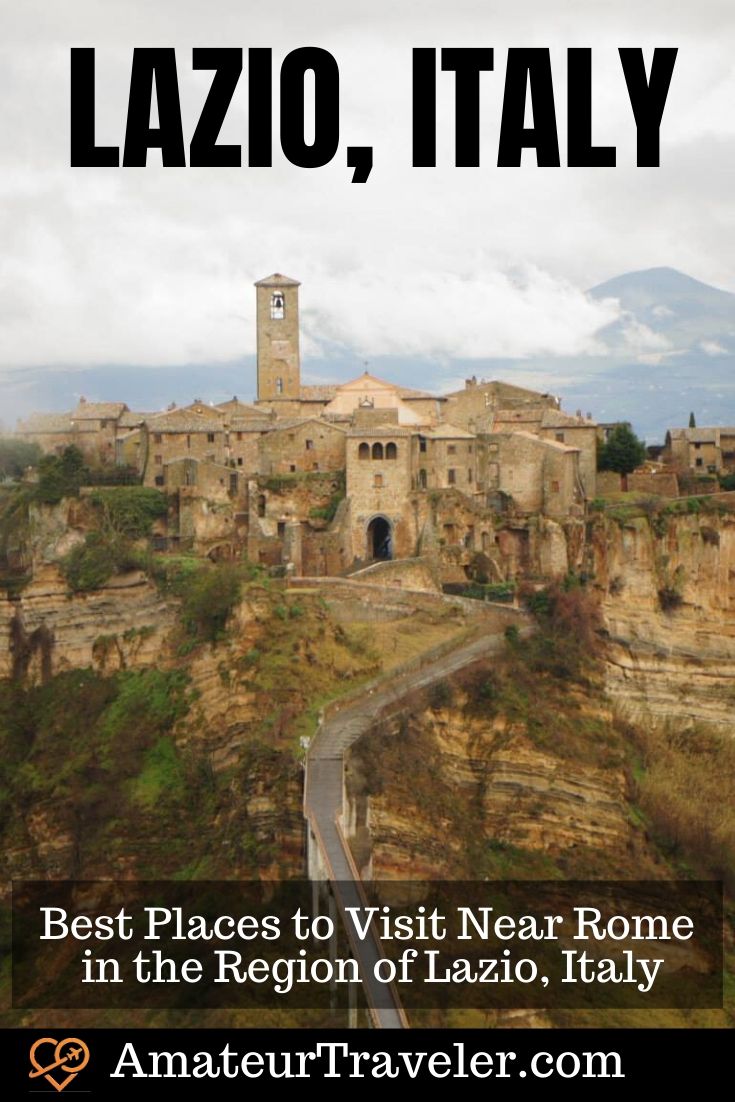


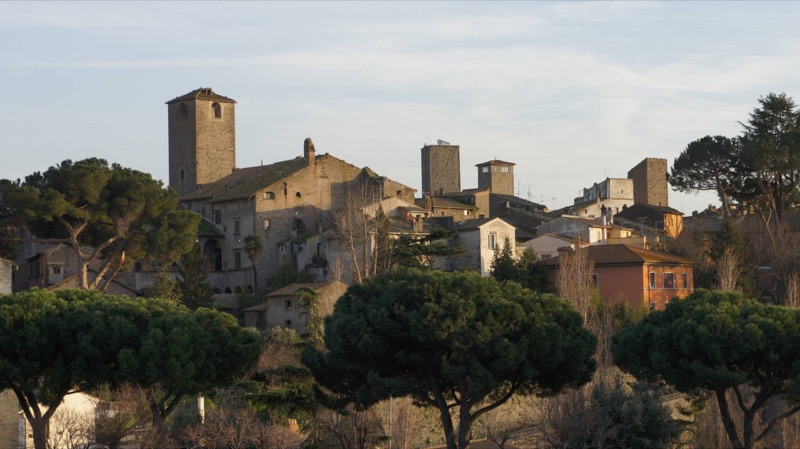
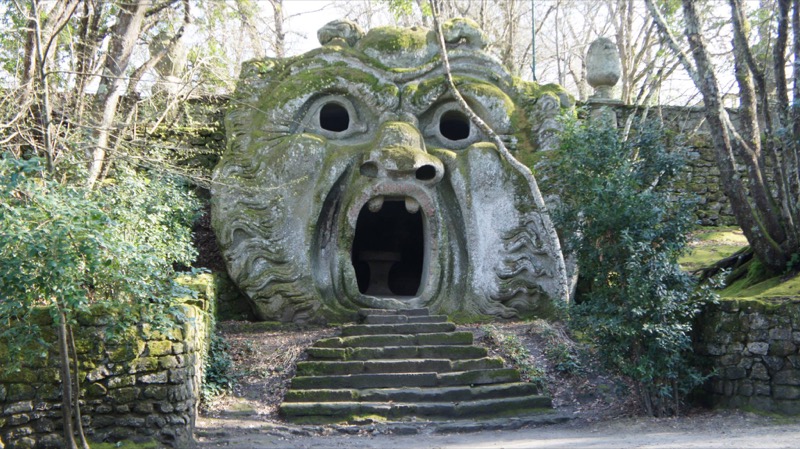




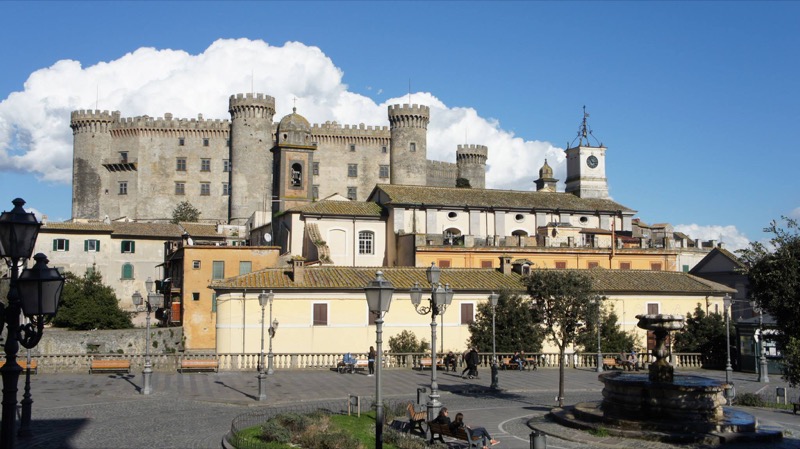
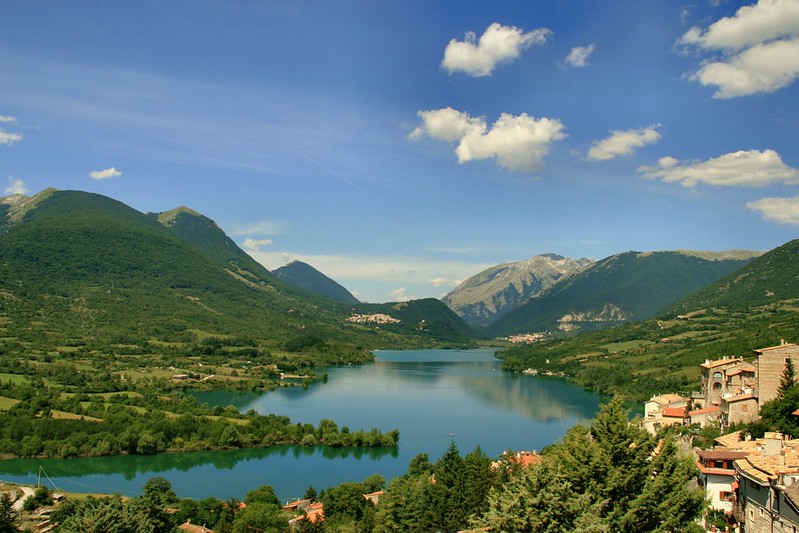

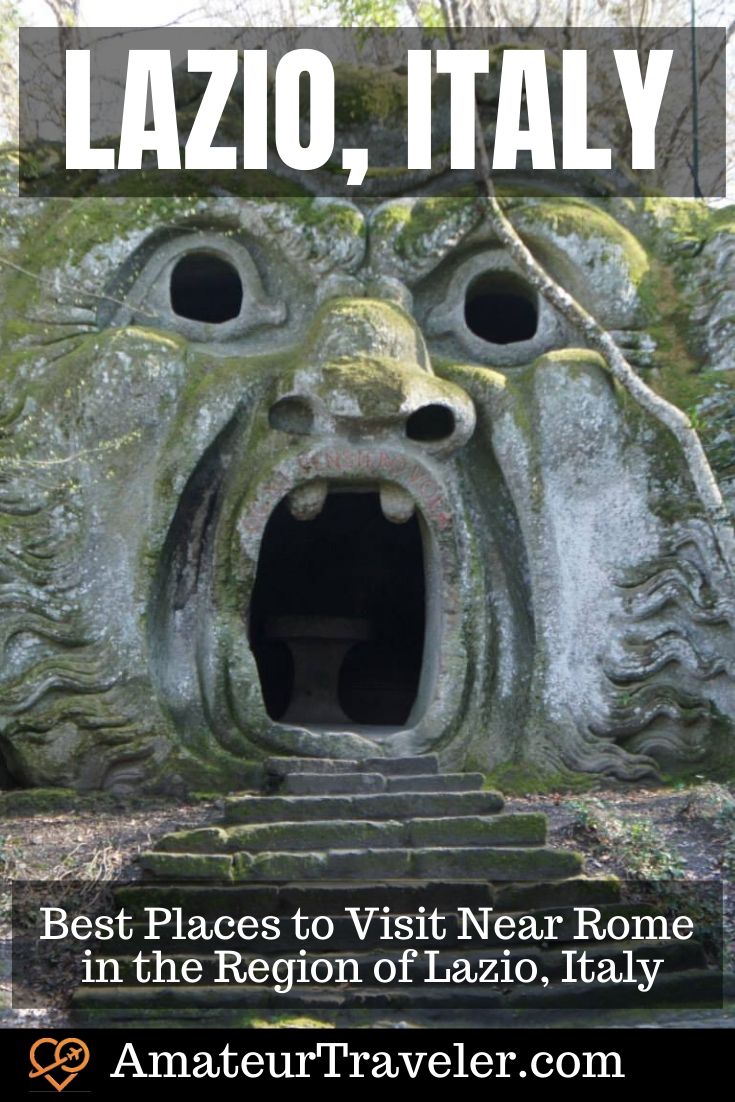
 Travel to Rome, Italy – Episode 29
Travel to Rome, Italy – Episode 29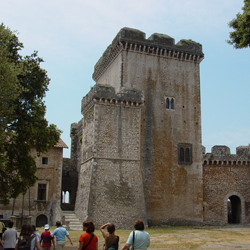 Travel to Lazio, Italy – Episode 427
Travel to Lazio, Italy – Episode 427 Visiting Ostia Antica, Rome’s Ancient Seaport with Context Travel – Italy
Visiting Ostia Antica, Rome’s Ancient Seaport with Context Travel – Italy Top 10 Things to Do When in Rome, Italy
Top 10 Things to Do When in Rome, Italy
